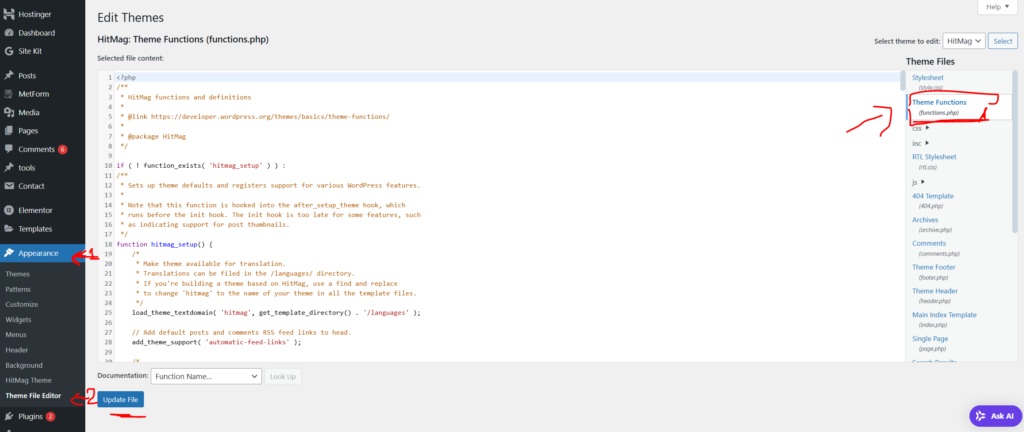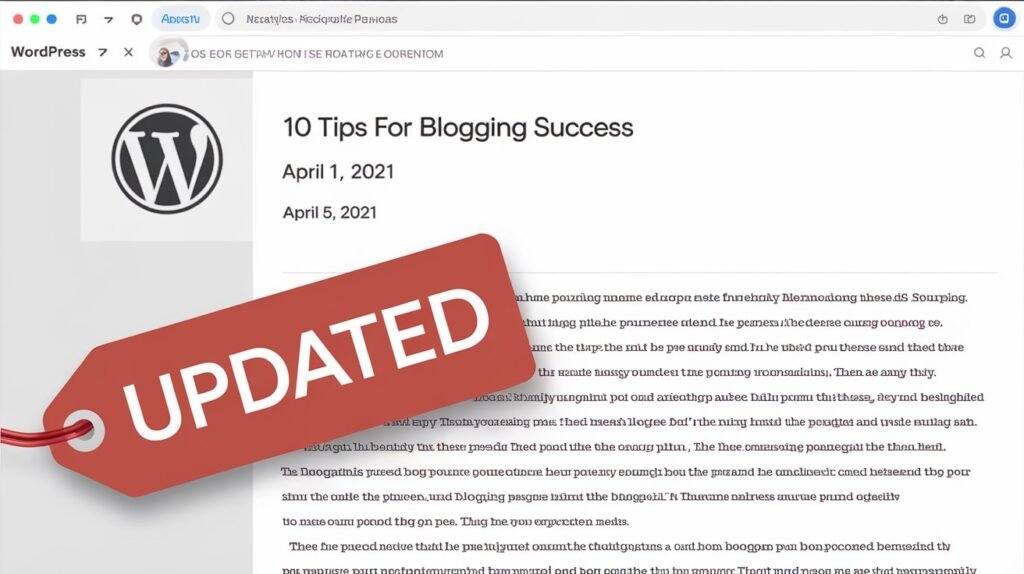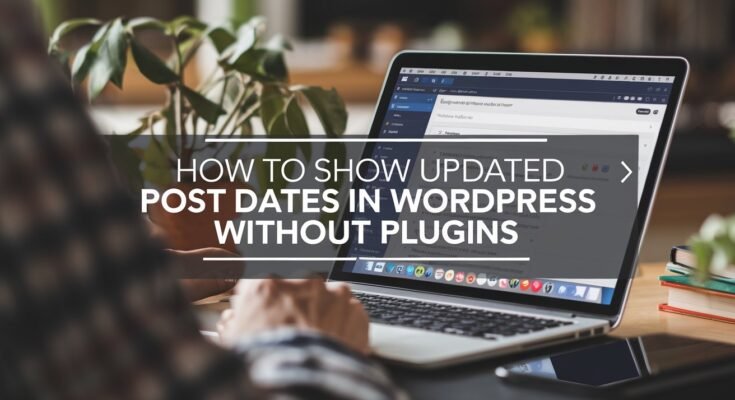Maintaining your website’s content current is vital to maintain the trust of your customers and increasing the ranking of your site. Search engines like Google usually prefer accurate, current content. People also like knowing when a article was last updated particularly when it’s an area that is perpetually updated or time-sensitive. But, by default, WordPress doesn’t show the date the post was last modified this makes it difficult to inform your readers in the event that your content has been modified. This is why we have managed to incorporate this feature without requiring plugins.
The tutorial below will show you how to modify your WordPress theme’s code to ensure that it shows the date that was altered or updated for the article. We’ll also examine the reasons this feature is essential in SEO, as well as its SEO benefits as well as the best ways to keep your blog’s content updated.
Why WordPress Doesn’t Display Modified Dates by Default

WordPress was designed by the creators to display the date of posting on blog posts, which informs users the date on which a blog post was first published. But, the notion that a post can be published on a modified (or altered) date hasn’t been present since the very beginning. The reason is usually just a matter of simple facts that displaying just that date on which the post was published appeals to non-bloggers who aren’t likely to revisit previous blog posts.
Advanced users, like you can alter the settings according to your personal preferences and give more specific information to your viewers including this important data manually.
How to Manually Show the Last Modified Date in WordPress Without Plugins
The method is the simplest method to display the date that was changed in your blog posts using PHP codes. This method is ideal for people who don’t want to bother costs associated with updating and installing plugins.
Follow These Simple Steps:
- Log in to Your WordPress Website:
Log into the WordPress admin dashboard. You’ll need access to your admin account for this task.
- Copy the PHP Code Below:
This is what’s the PHP code we’ll use to show the modified date in your WordPress blog:

`
// By MohiRDO
add_filter( 'generate_post_date_output', function( $output, $time_string ) {
$time_string = '<time class="entry-date published" datetime="%1$s" itemprop="datePublished">Published on: %2$s</time>';
if ( get_the_date() !== get_the_modified_date() ) {
$time_string = '<time class="entry-date updated-date" datetime="%3$s" itemprop="dateModified">Last Updated on: %4$s</time>';
}
$time_string = sprintf( $time_string,
esc_attr( get_the_date( 'c' ) ),
esc_html( get_the_date() ),
esc_attr( get_the_modified_date( 'c' ) ),
esc_html( get_the_modified_date() )
);
return sprintf( '<span class="posted-on">%s</span> ',
$time_string
);
}, 10, 2 );- Navigate to the Theme Functions File (`functions.php`):
- Go to Appearance > Theme File Editor.
- Find your theme’s `functions.phpFile located on your right.
- Paste the Copied PHP Code:
- Scroll until the very bottom `functions.phpthe document.
- Copy the code above before your closing tag (`?>`), If you own one.
- The file is able to be saved and downloaded.
- Refresh Your Website:
Look over your blog posts on the front page. You should be able to see the date modified or updated along with the date of publication.
A Quick Demonstration
Your post might show something similar to the following:
- Released 1st Jan. 1 2023
- Its most recent update was on September 30, 2023
This is especially beneficial to those who will visit your website frequently because they’ll immediately know your content is up-to-date and up-to-date.
Why Adding the Last Modified Date Matters

Integrating”Last Updated” date “Last Updated” date goes beyond appearance. This is the reason it’s so important:
For SEO
Search engines favor the most current content because it demonstrates how important it is. Modified date:
- This lets Google find out when the page was last reviewed or updated.
- Increases the chances of being discovered for details that are time-sensitive.
- produces featured snippets information based on the most recent information.
For User Experience (UX)
Your customers require information that they can trust. By showing the date that was last modified:
- You’re willing to discuss whether or not you’re able to verify the authenticity of your information.
- Your followers will notice how much you value giving value with frequent updates.
- It enhances its credibility for content.. It is particularly useful in fields where relevance is vital.
Other Ways to Display the Modified Date
If the task of editing themes files is a challenge you have a few alternatives:
1. Using Plugins
A range of WordPress plugins allows you to automatically add dates that have been modified without the need to write code. Here are several alternatives:
- the WordPress information that was last updated provides both the most recent and the most recent dates for publication.
- Yoast SEO and Rank Math These plugins offer advanced customization of date to provide SEO-friendly results.
- Post Updated Date Plugin.
2. Hire a Developer
Do you have difficulty in programing? Talking to an WordPress developer will ensure that the function is performed without a glitch.
Best Practices for Updating Content
After your dates have been updated, you’ll need to put them in place, the next step is to make sure that you’re posting posts regularly:
- Revisit Content Regularly:
- Check out posts that bring in significant traffic, however they might appear outdated.
- Make sure you’re verifying facts or updating images, and also replace broken links or old information.
- Announce Changes:
- If it’s a major modification (e.g. new strategies, techniques or tools) it is possible to put an image at the page’s front webpage with the words, “This article was last updated on X Date for accuracy. “
- Track Updates:
- Use calendars to track revisions.
Keep Improving Your WordPress Website
A regular update of your blog’s content and showing the date of modifications is an effective method to show your blog’s commitment to timely, relevant data. This practice does more than just boost your site’s SEO and increases its visibility, it can also increase confidence and improve interaction with your visitors. Utilizing the easy code found in this article or if you are considering a plugin of your choice, you can implement this strategy right now.
A continuously updated and active blog is an impressive signal to users and also to search engines. It’s time to reap the rewards of this simple but powerful change. Test it now!




